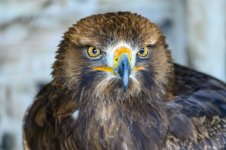- Messages
- 5
- Name
- Paul Bates
- Edit My Images
- Yes
Hi
I wasnt too sure what category to post this in as it covers 2 topics, but fundamentally it comes down to the fact im a complete beginner with less than a years experience!

I currently own a Sigma 150-600c lens ( and I know that 80% of my problems are probably technique ) but I am getting frustrated at the fact it struggles in low light.
What I dont understand is what is considered as low light? the next step up from this lens is possibly the nikon 500mm PF which will involve selling one of my kidneys. but will a prime lens like this respond much better to low light than my sigma?
I see photos that people post of dawn/dusk but I dont have any point of reference as to whether its quite dark dawn/dusk or if it pretty much full light.
So I guess the basic question is will an upgrade to this lens ( or equivalent without going to crazy money ) make a material difference to the performance I currently get with the sigma?
thanks
I wasnt too sure what category to post this in as it covers 2 topics, but fundamentally it comes down to the fact im a complete beginner with less than a years experience!


I currently own a Sigma 150-600c lens ( and I know that 80% of my problems are probably technique ) but I am getting frustrated at the fact it struggles in low light.
What I dont understand is what is considered as low light? the next step up from this lens is possibly the nikon 500mm PF which will involve selling one of my kidneys. but will a prime lens like this respond much better to low light than my sigma?
I see photos that people post of dawn/dusk but I dont have any point of reference as to whether its quite dark dawn/dusk or if it pretty much full light.
So I guess the basic question is will an upgrade to this lens ( or equivalent without going to crazy money ) make a material difference to the performance I currently get with the sigma?
thanks


